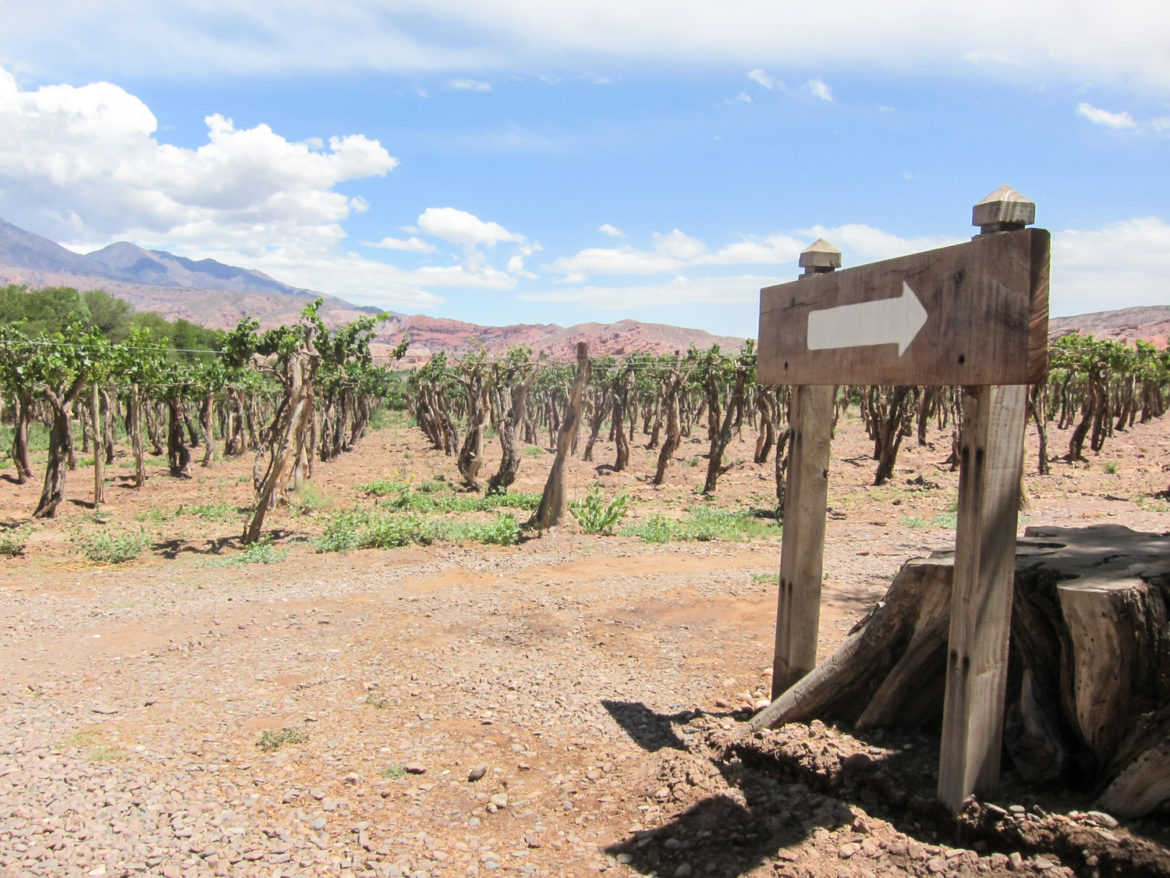In northwest Argentina, Cafayate is a charming wine town and the main tourist base for exploring the region’s plentiful wine bodegas.
From Salta, we rented a car to make the incredibly scenic drive through the Calchaqui Valleys. This stunning area features red rock formations amid mountain vistas and lush valleys, the result of snowmelt from the Andes. After three hours, we stopped in the quiet town of Cachi for lunch. At Comedor El Estribo, we enjoyed authentic tamales (shredded meat cooked in corn husks) and humitas (steamed corn cakes). Continuing on to Cafayate, the drive would be another four hours, which wouldn’t have been so bad if the road hadn’t been unpaved the entire way. As we bumped along, we began to seriously question our cheap and charming option of renting a Chevy Corsa. The last thing we wanted was a repeat of the breakdown during our cross-country trip in the Uyuni Salt Flats and Atacama Desert.
Four hours later, we finally arrived in Cafayate, completely wiped out. After checking into the lovely Hostel Lo de Penalba, we walked to the nearby Plaza Central for dinner. At El Rancho, we enjoyed a comforting meal of cheese empanadas, spaghetti and house red wine. In typical Argentine fashion, two men gave an impromptu musical performance. We quickly began to zone out from the drive / wine / food. Somehow we managed to get ourselves back to the hostel and quickly fell into a deep slumber.
The next day, we awoke rested, renewed and on a mission: wine.
From rustic, mom-and-pop shops to more modern bodegas, we explored it all. Despite the differences, nearly every operation produces wine with the Torrontés grape, which only grows in Argentina. At Bodega El Esteco, we toured the wine making facility and learned that wines in this area tend to be similar year after year. The desert climate means little rainfall and thus, a more controlled environment to create more consistent wines. After the tour, we enjoyed a wine tasting – our favorite: the Elements Torrontés 2010. Its floral, peachy nose gave way to a bright, mineral taste that was different than most other white wines we’ve tried.
That sense of discovery is what we enjoyed most about all the different wineries we visited. At Vasija Secreta Winery, the valley’s oldest winery, we tasted more Torontés, along with Malbec and Cabernet Sauvignon – all delicious. At organically certified Bodega Nanni, we tried our first Argentinian Tannat, a grape typically used for blending in France. Bodega El Transito, started by an Italian immigrant in the late 19th century, offered a contemporary, intimate wine tasting experience. Bodegas Etchart, one of the larger wineries, has a production of more than 6 million bottles. While Bodega Salvador Figuero, a very small operation, does everything by hand, even crushing the grapes. And Bodega El Porvenir, a family winery, is setting out to put Cafayate on the world stage of wine making.
Needless to say, Cafayate offers a plethora of wine experiences, each as unique and individual as the wine itself.
And yet, with all the wineries we visited, we agreed it was just as satisfying to have some cheap vino tinto at a local eatery. That’s one of the reasons why Argentina is so wonderful to visit. While it’s nice to treat yourself to a one-of-a-kind fine dining experience, the opportunity to enjoy the everyday is equally important. To be able to have a glass of wine and steak for a mere $10 is a real treat.
We look forward to doing more of just that on our next stop: Mendoza

